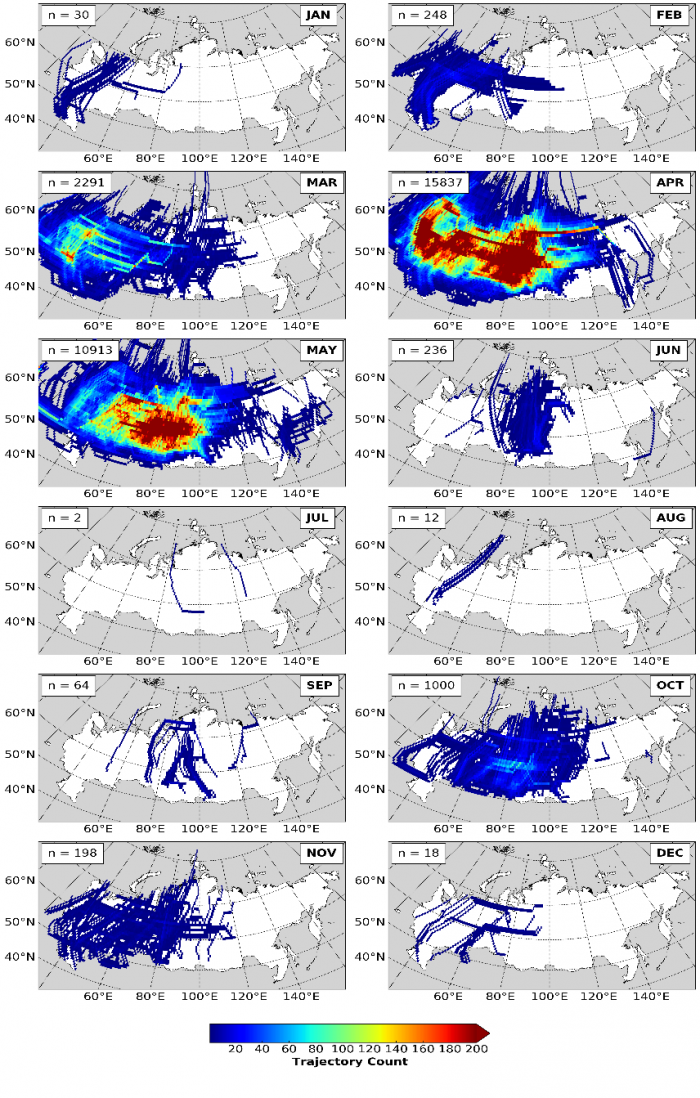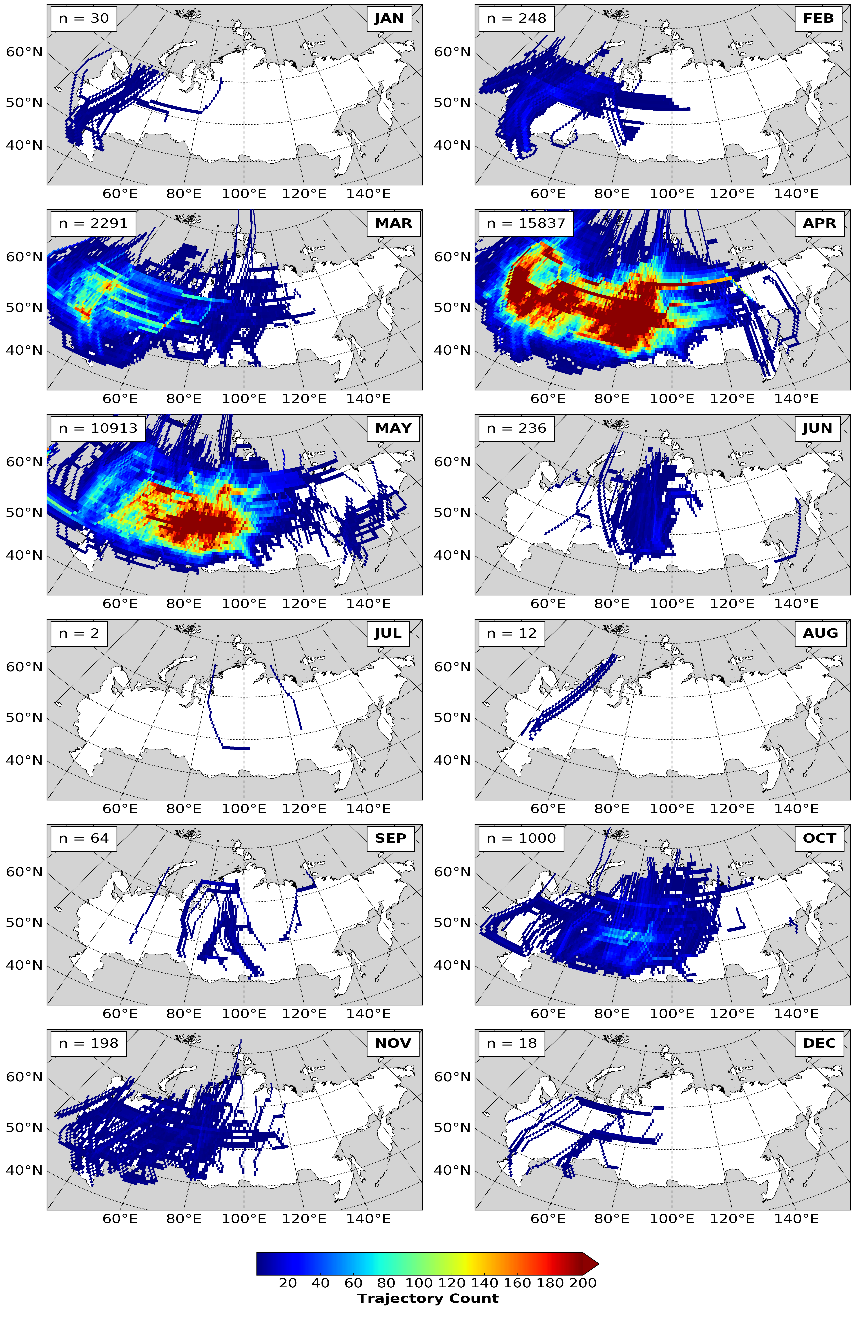Dr. Joanne Hall (Post-Doctoral Research Associate) and Dr. Tatiana Loboda (Associate Professor) recently published a research paper in Frontiers in Earth Science: Atmospheric Science. A summary of the research findings can be found below.
Over the past 30 years, the Arctic surface air temperature has risen at rates more than double of those anywhere else on Earth. The deposition of short lived aerosols and pollutants above the Arctic Circle transported from northern mid-latitudes have amplified the short term warming in the Arctic region. Specifically, black carbon has received a great deal of attention due to its absorptive efficiency and its fairly complex influence on the climate. Studies have suggested that cropland burning may be a large contributor to the black carbon emissions which are directly deposited on the snow in the Arctic. However, commonly applied atmospheric transport models rely on estimates of black carbon emissions from cropland burning which are known to be highly inaccurate in both the amount and the timing of release.
Instead, this study quantifies the potential for the deposition of hypothetical black carbon emissions from known cropland burning in Russia, identified by the Moderate Resolution Imaging Spectroradiometer(MODIS) active fire detections, through low-level transport to the snow in the Arctic using wind vectors from the European Centre for Medium-Range Weather Forecasts’ ERA-Interim Reanalysis product. Their results confirm that Russian cropland burning is a potentially significant source of black carbon deposition on the Arctic snow in the spring despite the low injection heights associated with cropland burning (Figure 1).

Figure 1: The cumulative number of successful trajectories to the Arctic snow per month between 2003 and 2015 at 925mb injection height.
Approximately 10% of the observed spring (March - May) cropland active fires (7% annual) likely contribute to black carbon deposition on the Arctic snow from as far south as at least 40°N. Furthermore, the results show that potential spring black carbon emissions from cropland burning in Russia can be deposited beyond 80°N, however, the majority (~90% - depending on injection height) of all potential spring deposition occurs below 75°N.


